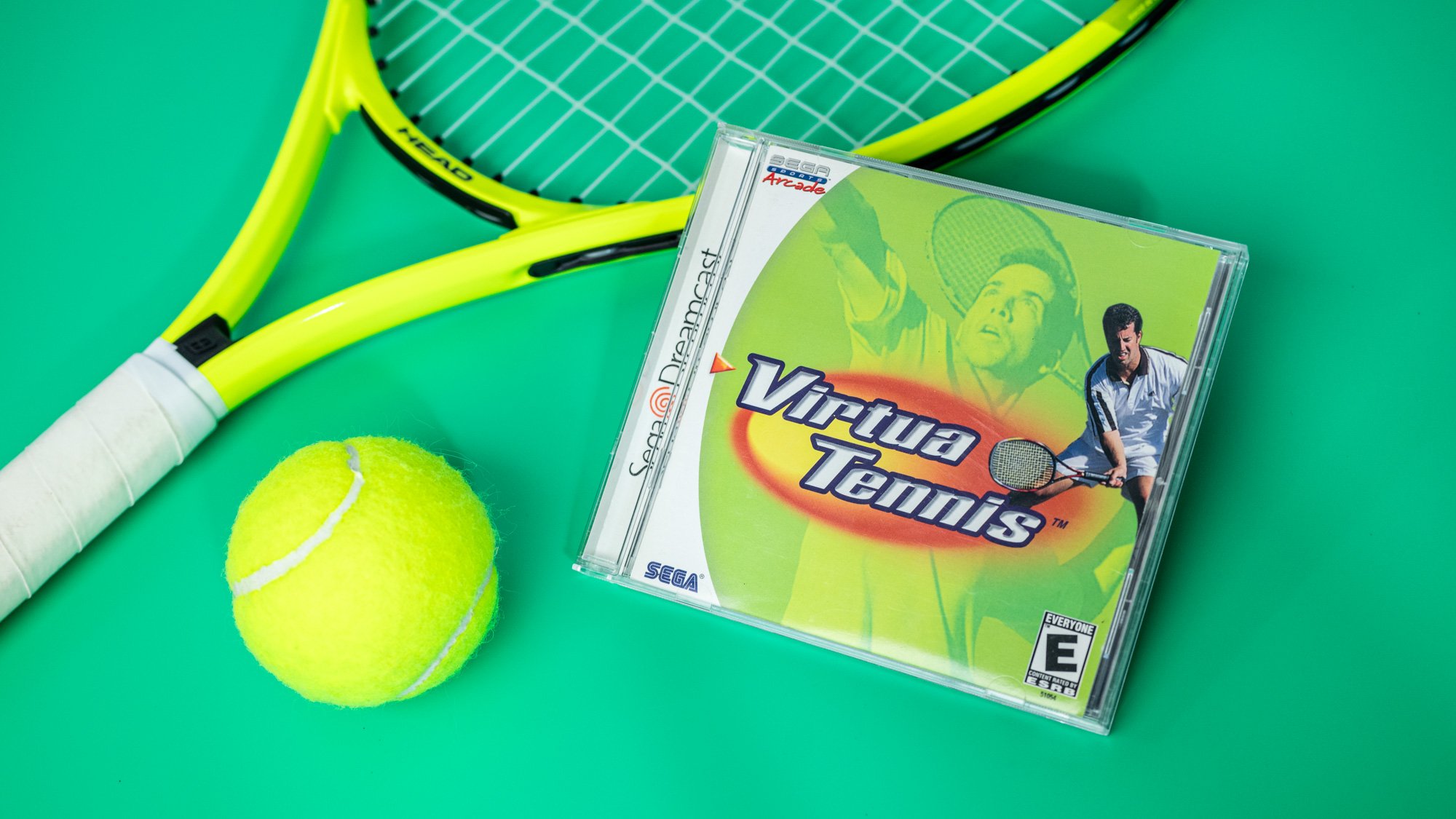Virtua Tennis
Alternate Titles - Power Smash (Japan)
Developer - Hitmaker (SEGA AM3)
Publisher - SEGA
Executive Producer - Hisao Oguchi (who later became President of SEGA)
Producer - Mie Kumagai
Director - Katsumoto Tatsukawa
Chief Designer - Kazuko Noguchi
Sound Producer - Chiho Kobayashi
Genre - Sports; 1 - 4 Players
Release Dates - July 12, 2000 (North America)
Additional Releases - SEGA NAOMI arcade cabinet (1999); Game Boy Advance (2002); Windows PC (2002); Nokia N-Gage (2003)
Current Average Price - $25
I won’t bury the led. Here are the important facts about Virtua Tennis.
First, it was pitched and its development spear-headed by Mie Kumagai, a developer and producer who went on to become SEGA’s very first female studio president, and the first female studio president in the history of the Japanese video game industry.
Second, after a successful arcade debut, the Dreamcast port of Virtua Tennis went on to be one of the system’s all-time highest-rated games.
Last, but certainly not least, Virtua Tennis remains an absolute blast today. It is yet another Dreamcast game to reinforce my oft-repeated declaration, “Good games stay good.”
Development
In the mid- to late-1990s, Sega AM2 and director Satoshi Mifune enjoyed great success with the Virtua Striker series of soccer games. Sega AM3 producer Mie Kumagai had noticed the broad appeal of this series and became interested in creating her own sports game which could be similarly enjoyed by casual players and competitive gamers alike.
But the project began with difficulty. Her first proposal, a basketball game, was rejected by Sega executives, and her alternative proposal, a tennis game, was approved with extreme skepticism.
Kumagai and one of AM3’s programmers traveled to a tennis school to research. They designed a unique racquet-like controller which could twist on an axis so that the player could shoot backhand or forehand shots. After months of testing, the controller was deemed to difficult to use, and taking advice from AM2’s Mifune, the control system was changed to a standard joystick and buttons configuration.
An early build of Kumagai’s tennis game was play-tested in Japanese arcades and within Sega’s offices. It received universally positive responses, after which full development was green-lighted without delay.
The game was called Power Smash in Japan, however Sega executives feared that this name would not resonate outside of Japan, so the game’s name was changed to the more familiar Virtua Tennis for the European and North American releases.
Gameplay
Virtua Tennis is an arcade-style tennis game defined by its movement, fast pace, and a general air of excitement. The animation is gorgeous and fluid, the action is fast, and the music is pitch-perfect Japanese hype-rock.
The game can be played by one to four players in both singles and doubles exhibitions, tournaments, and World Circuit modes.
In Arcade mode, the player must win five matches played on various surfaces and in different venues. After winning the final match, the player may be challenged by Master, a sort of final boss.
In Exhibition mode, a single customizable match is played. The player can choose how many human and computer players are involved in a match, the duration of the match, and where and on which surface the match is played.
World Circuit mode has the player completing training exercises in order to progress to matches. By performing well, the player unlocks more and more training sessions and matches, with each training session and match progressing in difficulty as we rank up from 300th place to 1st. Successful completion of challenges earns outfits and other unlockables which can be worn and used in all game modes.
Reception and Legacy
Virtua Tennis is a Dreamcast classic, and one of the highest-rated games on the console. In 2001, Game Informer ranked it 50th in their Top 100 Video Games of all time list. In 2003, IGN ranked it 89th in their own Top 100 Games of All Time list, and #91 in a later list from 2005.
In the year 2000 Academy of Interactive Arts & Sciences, Virtua Tennis was nominated for “Console Sports Game of the Year” and “Overall Console Game of the Year” awards, both of which were awarded to the snowboarding game SSX.
Virtua Tennis spawned numerous sequels, the first of which, Virtua Tennis 2, released on the Dreamcast. This sequel added a full roster of female tennis stars and the ability to hit slices.
Later sequels include Virtua Tennis: World Tour for the PlayStation Portable (2005); Virtua Tennis 3 for arcades, Xbox 360, PlayStation 3, PlayStation Portable, and Windows (2006-2007); Virtua Tennis 2009 for Windows PC, PlayStation 3, Xbox 360, and Nintendo Wii (2009); Virtua Tennis 4 for Windows PC, PlayStation 3, Xbox 360, and Nintendo Wii, PlayStation Vita, and arcade (2011-2012); and Virtua Tennis Challenge for Android and iOS (2012).
A new Virtua Tennis game has not been released since 2012’s mobile version, and the series’ creator, Mie Kumagai, left Sega in 2015 to join mobile game studio Colopl.
Though only a tangential relation, it’s interesting to note that portions of Virtua Tennis’ original code was used to create another Dreamcast classic, the Breakout-style squash game Cosmic Smash. More interesting still, Cosmic Smash was recently revived some twenty years after its debut by the game studio Rapid Eye Movers in the form of C-Smash VRS, a fabulous virtual reality game for the PlayStation VR2.




